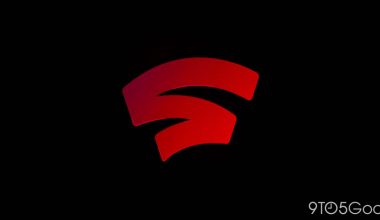As many of you are already aware, ASUS recently unveiled their newest Android phone, the ZenFone 9. One of the very few tiny phones on the market that are also powerful at the same time, that device is the brand’s new flagship model. Since my colleague received the phone before me, I didn’t get a chance to review it, but I have much to say about it. I can fairly claim that, at least for my purposes, ASUS produced an almost excellent phone after using this item for approximately a week.
Because of the nature of my job, I frequently change phones. I always have that one phone that I use frequently, my “daily driver,” in between evaluations. That has been the Google Pixel 4a for a while now. That might sound strange considering the fact that I have access to much newer, more powerful phones. Well, it’s difficult for me to find a phone that would suit my demands given the industry’s propensity toward manufacturing enormous phones. Finding smaller smartphones has been difficult for me because I prefer them. In recent memory, the Pixel 4a is essentially the only one that meets my requirements. I’ve been using it for a while, but a modification was necessary.
Long ago, I considered switching phones, but nothing persuaded me to do so. I only used the ZenFone 8 for a short time, and while it was a good phone, it wasn’t quite as wonderful as it could have been. The ZenFone 9 has arrived, and compared to its predecessor, it is virtually always better. The ZenFone 9 was able to maintain the same display size as its predecessor while also making significant advancements in both the photography and design sectors. Additionally, ASUS increased the battery life significantly and added a few intriguing features, creating an almost ideal phone for my purposes. Even if we are aware that nothing is flawless, this is still good enough. Let’s dissect it, shall we?
Advertisement THE CONCEPT The design of the ZenFone 8s was flawless. To be very honest, many thought it was even too simplistic and boring. I did as well, albeit I wasn’t as bothered by it. I was somewhat disturbed by how slippery it was. With the ZenFone 9, that is not the case. It not only feels much more secure, but it also appears much better.
On the back of the ZenFone 9, polymer replaces glass. The only way I can explain it is that the backplate feels smoother than paper. Additionally, ASUS combined a significant curve on the rear plate with the flat sides of the frame to replace a steeper curve with a less severe one. The phone is smaller than its predecessor and has a very pleasant feel in the hand. I also have to give ASUS credit for that accomplishment. It was able to maintain the same weight and display size while reducing its height and width.

Advertisement Also more attractive than before is the backplate. Compared to the ZenFone 8s, the two camera islands are fairly huge, but they are beautifully made. Because one camera island is larger than the other, the phone rocks when you set it down on the table. Therefore, it is even more awesome than the ZenFone 8 and even more awesome than it would be if they were the same size. To be quite honest, that doesn’t concern me all that much, but it should be noted.
It’s also important to keep in mind that, with time, the backplate can start to seem ugly. After a short while, I noticed it started to fade for my coworker and a few other customers. Although it is not the case with my unit yet, I anticipate it will. To avoid a backplate that is more slippery, I’m happy to make that compromise.
BATTLE WINNS In general, the ZenFone 8’s battery life wasn’t horrible. It was typical. Usually, I was able to watch for between 5.5 and 6 hours. Well, the ZenFone 9 goes above and beyond; it destroys its predecessor. With plenty of battery left over, I am consistently able to get more than 7 hours of screen time. I typically have between 20 and 30 percent remaining, which is absurd for a small phone. You should prepare for a poor battery life on small devices. This is definitely not the situation.
Advertisement Additionally, ASUS has provided here 30W fast wired charging, which is plenty quick. In one hour and fifteen to twenty minutes, you can reach full charge. Although not by any means the fastest charging, it is quick enough. You won’t probably ever feel the need to charge it quickly either, given how long the battery lasts. Be aware that ASUS omitted wireless charging from this list, which may annoy some of you. Some compromises had to be made given the size of this phone and everything it has to provide. I’m pleased wireless charging wasn’t included because it would have made the phone thicker than it already was and produced more heat. Phones with displays under 6 inches have a restricted amount of space.
HEAT MANAGEMENT AND SHEER POWER The ZenFone 8’s warmth was one among the things that users criticized it for. Some users complained that the phone heated up considerably too much, especially when performing graphically demanding tasks. You’ll be relieved to learn that, at least based on my experience of the ZenFone 9, that is not the case. I can’t believe how well the phone runs. In the past couple of years, I’ve examined quite a few phones, and this one is among the coolest. The temperature does rise very slightly, but that’s about it. When you play games, that changes, but it never gets too warm.
How come? One of the key benefits of the Snapdragon 8 Gen 1 is that it performs more efficiently than the Snapdragon 8 Gen 1. Additionally, ASUS updated the phone’s internal cooling system. The business added a sophisticated heat spreader that makes use of copper, graphite sheets, and thermal paste in place of heat pipes and a vapor chamber. All of that appears to have been effective. Oh, and no matter what you do, the phone is blazingly quick. The jittering that some phones with 120Hz displays experience is not the problem here.
Advertisement YOU’LL BE SURPRISED BY THE CAMERA The cameras were one of the things that most astonished me. Wide-angle and ultrawide-angle cameras are available on the ZenFone 9’s rear. The Sony IMX766 camera sensor was incorporated by ASUS for the primary camera. That 50-megapixel camera is also included in the Nothing Phone (1) and ASUS ROG Phone 6. The problem is that it functions more well on this phone than it does on the other two. The images turn out sharp, with lots of detail, accurate depictions of the greenery, and passable HDR handling. When photography in low light, night mode makes the photographs more brighter while shooting without it produces darker, more realistic images. Everything is up to personal preference. Although not spectacular, those images are extremely decent.

Even the ultrawide camera produces quality images. It offers high-quality pictures and maintains the same color scheme as the primary camera. Actually, I was taken aback by this. Many smartphone OEMs make this mistake, and images taken with the main and ultrawide cameras have very different aesthetics.
Advertisement However, not everything is perfect. When there is too much sunlight present, the phone occasionally messes up HDR settings. Not frequently, but it does happen. It also like it when you use touch-to-focus to balance things out in particular circumstances. The selfie camera is not very good, but I personally don’t care about taking selfies and, when I do, I frequently use primary cameras, so that’s not a problem for me. However, it might work for you. Overall, the cameras are excellent but fall short of the Pixels and the Vivo X80 Pro, which are, at least in my opinion, the two best mobile cameras now available.
FACTOR SMART KEY The ASUS ZenFone 9 sports a side-facing fingerprint scanner, in contrast to the ASUS ZenFone 8. A power key with the fingerprint scanner inside of it actually offers greater functionality. It is called Smart Key by ASUS for a reason. As a result, in addition to functioning as a fingerprint scanner and a standard power/lock key, it may be programmed to perform other tasks. Double tap and long press actions can be assigned, but that’s not even all that’s possible.

Advertisement A touch sensor built into this button allows for some really unique functionality. A swipe-down motion can have an associated action. Therefore, regardless of the screen you’re on, you may summon your notification shade with a single swipe. Similar features were included in the Galaxy S10e, and they are actually quite helpful. I don’t think it’s gimmicky at all because I frequently utilized a similar function on the Pixel 4a, even though that device’s fingerprint reader was on the rear rather than the side. There are various options available; it is up to you whether or not to use the notification shade or any of the other actions.
RELATED ACTIONS ANDAMP; BACK TAP In addition to everything we’ve already discussed, ASUS added a few extra gestures and tips to make using this phone as quick and easy as possible. You can flip the device down to mute it, double-tap the screen to turn it off, double-tap the screen to turn it on, set a swipe up to wake it up in place of a double-tap, and so much more. You can even see your notifications by lifting the smartphone, among other things. Even better, you can write letters on the display when the screen is off and assign particular letters to particular programs or tasks. You may then easily start your music player, camera, or other device.
Additionally, the ZenFone 9 offers a back tap feature. Back double tapping can be used to start Google Assistant, capture a screenshot, activate the camera, turn on the flashlight, and more. Contrary to some other phones where it is either too sensitive or not sensitive enough, this actually works pretty nicely.
Advertisement THE TROUBLES There are some more annoyances with this phone in addition to the camera-related issues I mentioned. Even if some things are almost perfect, nothing is. Below, I’ll list them.
Make a hole

Normally, the punch hole is annoying enough on its own, but ASUS chose to add a silver ring inside it for some reason. You’ll notice a silver ring right next to the camera, which when you’re using the phone, does poke you in the eye. If they didn’t, the punch hole would vanish into the shadows. This silver ring, which the firm also used in the ZenFone 8, doesn’t actually serve any particular purpose.
energy key
I already mentioned how helpful the power key is. I would prefer it if it were more clicky, though. The button doesn’t have a lot of motion and feels a little mushy. In a way, I would love it to be more rugged and stand out more.
A fantastic small Android phone is the Zenfone 9.


0
That’s pretty much it for now. I don’t really have any serious complaints, as you can see. This could change in the future, but for now, in my opinion, this is the year’s best phone. It offers a choice to those who don’t want to be bothered all day long by large phones. Although not small, the ZenFone 9 is nonetheless compact. It is small enough to fit comfortably in the hand and pocket and has a reasonable-sized display so you won’t feel like you’re losing out. That’s at least how I’ve found it and how I feel about it.
I sincerely hope that ASUS will have success with the ZenFone 9 and that sales will be (even) better than they were for the ZenFone 8. I certainly hope to see more of these gadgets in the future.







